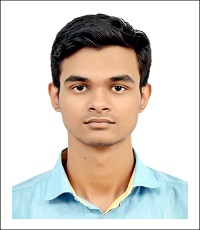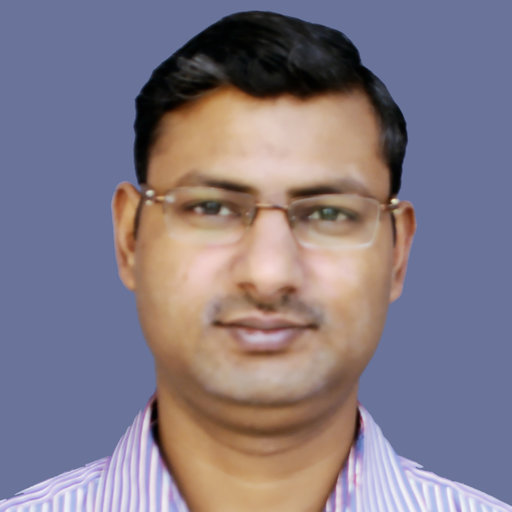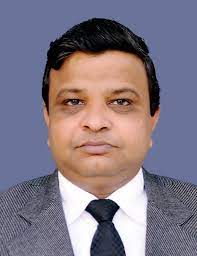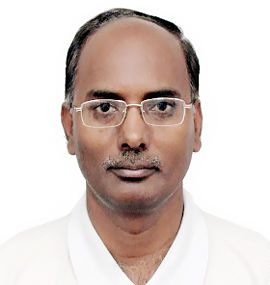Digital Twin for Electric Energy Systems: A New Era of Digitization
Written by Sourabh Ghosh, Navneet Kumar Singh, Asheesh Kumar Singh, and Sri Niwas Singh
Globally, the carbon footprint from fossil fuel-based energy generation and industrial processes has crossed 36 Gigatons marking an annual increase of 6% in 2021. This has encouraged governments and enterprises to increase investments in Renewable Energy Sources (RESs) which have risen to $2.4 trillion with an annual increase of 8% in 2022 [1]. Distributed on-site energy generation-based microgrids at multiple sites may be integrated using a central control system to form a Virtual Power Plant (VPP) offering efficient monitoring, forecast, and decision-making capabilities. Digital Twin (DT) of EESs uses real-time data streams from physical assets and high-fidelity models to cater to predictive maintenance, real-time remote monitoring, and decision-making. In 2021, the DT industry was valued at $6.5 billion and is estimated to reach $125.7 billion by 2030, growing at a compound annual growth rate of 39.48%. The application of DT technology in EESs is significantly underdeveloped which encourages both researchers and entrepreneurs. In this light, this article aims to provide a concise but wide view of the concepts, applications, enabling technologies, challenges, and future scope in the domain of digitization of EESs.
Introduction to Digital Twin
Digital twins are defined as software-based abstractions of a complex system representing a physical asset connected via a communication link for continuous real-time data streaming. Digital twin paves a way for cyber-physical integration through bidirectional data exchange, improves twinning accuracy, and assists system operators in real-time supervisory and control to improve the performance of the physical system. Digitization of EESs offers anticipatory adaptation, enhanced security, and flexible participation to VPPs and other enterprises in DER-rich wholesale energy markets by using technologies such as big data, digital twin, and blockchain [2].
The real-time data from the physical asset is collected by Internet of Things (IoT)-based sensors and continuously exchange with its digital twin via a communication link. Due to the multi-source, multi-scale, noisy, and heterogeneous nature of the collected data, big data analytics plays a key role in cloud computing-based data processing. Later, artificial intelligence (AI) techniques can be applied to big data for feature extraction and data fusion. Such a digital twin model can detect, predict, optimize, and control any process dynamically based on physical sensor data and/or digital twin data. This makes the digital twin technology convergence for IoT, big data analytics, AI, and data fusion. A close match in the functionality of a digital asset and its physical counterpart makes the digital twin model successful. Other success criteria for a digital twin model include computation time, physical asset efficiency, and accuracy in prognostics and diagnostics.
The digital twin has become a major tool in various industries and applications which include smart manufacturing, healthcare, autonomous transportation, education, gaming, businesses, and cyber-security. The International Standards Organization has developed ISO 23247-1 for automation systems and integration focusing on a digital twin framework for manufacturing [3]. Other standards include ISO 10303, ISO 13399, and OPC Unified Architecture.
Digitization of Electric Energy Systems
It is crucial to develop accurate short- or long-term forecasting models for renewable power generation, load pattern recognition, and electricity tariffs in EESs by collecting historical and real-time data streams from local weather stations, satellite imagery, consumer behaviors, volatile electricity prices, and charging sessions from electric vehicle charging stations. These high-velocity, real-time heterogeneous data streams are a result of advanced IoT-backed information and communication networks. The volume of the aggregated raw data is huge which can be processed by using AI algorithms, big data analytics, and data fusion techniques for meaningful results and optimized decision-making. After validation of forecasting, the developed DT model of EESs will assist network operators in steady-state assessment, detection of extreme events, monitoring the state of health, and taking decisions confidently in response to sudden changes in the system [4]. Also, it can suggest an optimal configuration for EESs, reduce the stress on energy storage systems by proper resource allocation, and postpone the maintenance and replacement schedule for equipment to a time with minimal cost. Furthermore, advanced coordination among neighboring systems can be achieved by DT-DT communication of independent infrastructures such as electrical systems, water supply systems, gas networks, communication and transportation systems, etc.
Figure 1: Architecture for digital twinning for EESs
A successful virtual asset for EESs will provide the advantages of a high-fidelity simulation platform for operation testing during extreme events, configuration planning, and system scheduling based on forecasting and optimization. It becomes easier to analyze the efficiency, resilience, security, reliability, and life-cycle of physical assets in EESs located in hostile environments. Thus, uncertainty-aware informed decisions-backed investors can make accurate and low-risk investment plans for RESs. The DT for EESs may also facilitate simple interaction between personnel and equipment by using a human-machine interface and more advanced mixed reality technologies [5].
Challenges and Future Scope
Sometimes, digital twinning may incur more cost than the physical asset itself due to dependency on real-time data from IoT-based sensors for its development. Moreover, this raw data are large, noisy, unstructured, and heterogenous which requires further data processing using appropriate artificial intelligence algorithms (depending on accuracy and efficiency) on edge and cloud computing platforms. The distributed processing of the raw data is enabled by the edge computing platform, while the aggregate processing is enabled in the cloud leading to an increase in response time. Additionally, data aggregation and analysis on the cloud pose data breach threats which call for improved data communication and storage protocols. Also, there is a very limited number of standards that focus on the digital twin development framework [6].
The challenges in the development of digital twin for EESs may be overcome by high-resolution and high-velocity IoT-based sensors, low latency communication network, edge intelligence, improved algorithms for threat detection, fault diagnosis, health monitoring, process standardization, cyber-security, and modular multi-DT for an unprecedented level of interoperability.
Conclusion
The development of a successful DT model is largely dependent on data aggregation from IoT-based multi-sensors, data processing using big data analytics, and AI algorithms for feature extraction and data fusion. The DT realization requires high-performance software and hardware infrastructures for the fast execution of complex algorithms. The DT technology is beneficial for the physical assets of EESs which require real-time remote monitoring, prognostics, diagnostics, forecasting, and scheduling.
Keywords
Digitization; Distributed Energy Resources; Virtual Power Plants; Big Data; Blockchain; Digital Twin; Data Fusion; Artificial Intelligence
References
- “Global Energy Review: CO2 Emissions in 2021 – Analysis,” IEA. https://www.iea.org/reports/global-energy-review-co2-emissions-in-2021-2 (accessed Sep. 02, 2022).
- N. Bazmohammadi et al., “Microgrid Digital Twins: Concepts, Applications, and Future Trends,” IEEE Access, vol. 10, pp. 2284–2302, 2022, doi: 10.1109/ACCESS.2021.3138990.
- 14:00-17:00, “ISO 23247-1:2021,” ISO. https://www.iso.org/cms/render/live/en/sites/isoorg/contents/data/standard/07/50/75066.html (accessed Sep. 02, 2022).
- M. M. Rathore, S. A. Shah, D. Shukla, E. Bentafat, and S. Bakiras, “The Role of AI, Machine Learning, and Big Data in Digital Twinning: A Systematic Literature Review, Challenges, and Opportunities,” IEEE Access, vol. 9, pp. 32030–32052, 2021, doi: 10.1109/ACCESS.2021.3060863.
- Z. Gao, A. Paul, and X. Wang, “Guest Editorial: Digital Twinning: Integrating AI-ML and Big Data Analytics for Virtual Representation,” IEEE Trans. Ind. Inform., vol. 18, no. 2, pp. 1355–1358, Feb. 2022, doi: 10.1109/TII.2021.3104815.
- P. F. Borowski, “Digitization, Digital Twins, Blockchain, and Industry 4.0 as Elements of Management Process in Enterprises in the Energy Sector,” Energies, vol. 14, no. 7, Art. no. 7, Jan. 2021, doi: 10.3390/en14071885.
This article was edited by Vijay Sood
To view all articles in this issue, please go to October 2022 eBulletin. For a downloadable copy, please visit the IEEE Smart Grid Resource Center.

Sourabh Ghosh (Graduate Student Member, IEEE) received his B. Tech. degree in Electrical and Electronics Engineering from VIT University, Vellore, India, in 2017, and the M. Tech. degree in Power Electronics and Drives from the National Institute of Technology Delhi, India, in 2019. He is currently pursuing a Ph.D. degree in Electrical Engineering at Motilal Nehru National Institute of Technology, Allahabad, India after gaining a year-long industrial experience in the steel industry. His research interests include grid-feeding converter control, cyber-attack detection in microgrids, electric vehicle charge scheduling, and system configuration.

Navneet Kumar Singh (Member, IEEE) received his Ph.D. degree in Electrical Engineering from the Motilal Nehru National Institute of Technology Allahabad, India, in 2013. Since 2012, he has been a faculty member at the Motilal Nehru National Institute of Technology, Allahabad, India, where he is currently Assistant Professor with the Department of Electrical Engineering. He has been involved in research on renewable generation and load forecasting, demand side management, energy scheduling optimization, smart grid, and fault protection. Dr. Singh is an Associated Member of the Institution of Engineers (India), and a Life Member of the Indian Society for Technical Education.

Asheesh Kumar Singh (Senior Member, IEEE) received his B. Tech. degree in Electrical Engineering from HBTI, Kanpur, India, in 1991, a M. Tech. degree in Control Systems from the REC, Kurukshetra, India, in 1994, and a Ph.D. degree in Electronics and Computer Engineering from the Indian Institute of Technology, Roorkee, India, in 2007. Since 1995, he has been a faculty member at the Motilal Nehru National Institute of Technology, Allahabad, India, where he is currently Professor with the Department of Electrical Engineering. His research interests are the application of soft computing techniques to power systems, distributed generation, power quality, reliability, and grid impacts of e-mobility. Dr. Singh is a Fellow of the Institution of Engineers (India), and a Life Member of the Indian Society for Technical Education, and Systems Society of India.

Sri Niwas Singh (Fellow, IEEE) received the M. Tech. and Ph.D. degrees in Electrical Engineering from the Indian Institute of Technology Kanpur, Kanpur, India, in 1989 and 1995, respectively. He is currently a Professor with the Department of Electrical Engineering, Indian Institute of Technology Kanpur and also the Director of Atal Bihari Vajpayee-Indian Institute of Information Technology and Management (ABV-IIITM), Gwalior, India. His research interests include power system restructuring, FACTS, power system optimization and control, security analysis, and power system planning. Dr. Singh is a Fellow of the Institution of Engineering and Technology, Indian National Academy of Engineering, Institution of Engineers (India), and Institution of Electronics and Telecommunication Engineers.
To have the Bulletin delivered monthly to your inbox, join the IEEE Smart Grid Community.
Past Issues
To view archived articles, and issues, which deliver rich insight into the forces shaping the future of the smart grid. Older Bulletins (formerly eNewsletter) can be found here. To download full issues, visit the publications section of the IEEE Smart Grid Resource Center.





